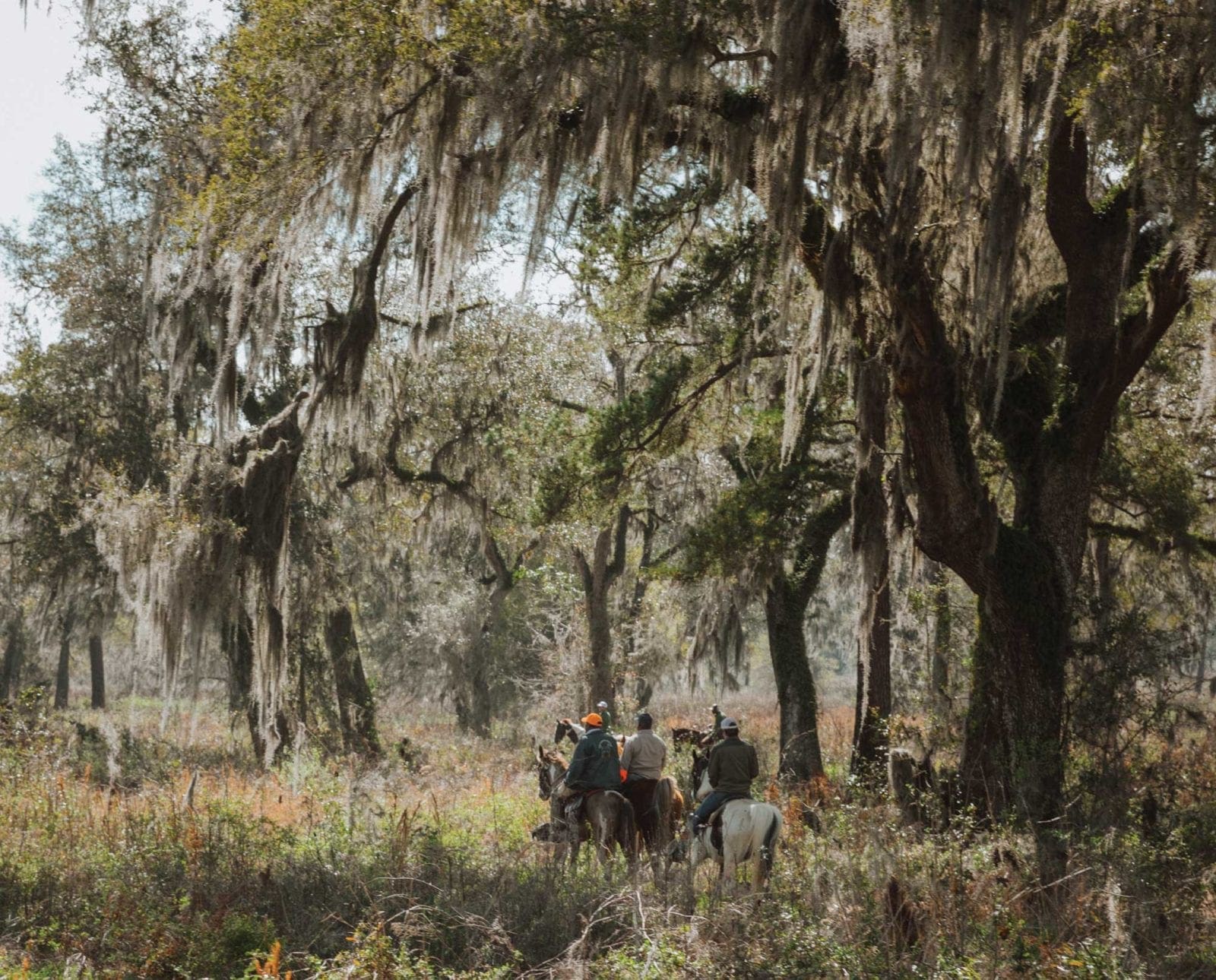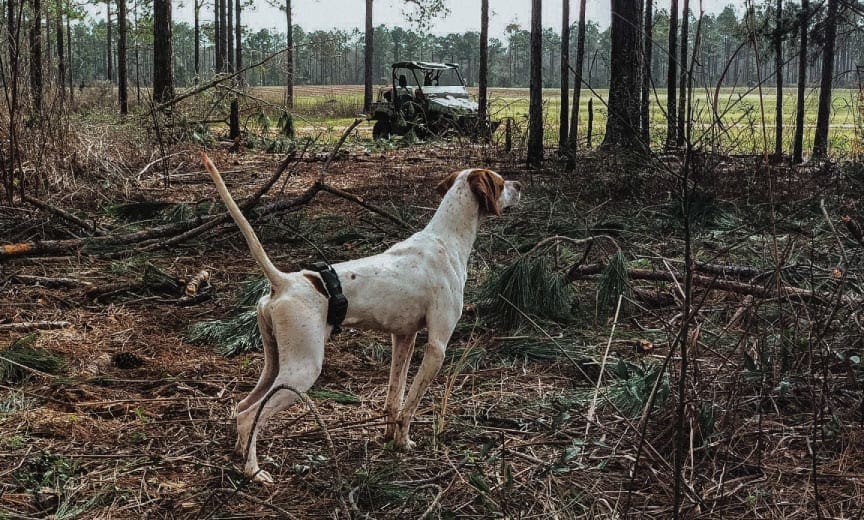Home » Field Trialing Dogs » The Founding and Idea of the American Field
The Founding and Idea of the American Field

Durrell Smith is a Georgia native, visual artist, wing shooter,…
A Look at the History, Founding, and Idea of the American Field and Field Trialing.
Let us take a step back to the estate, Cannock Chase, near Stafford, England in 1866 and take a look at a gentleman who took on this endeavor as a means of evaluating the best in the land at the time. The first trials were conducted, as reported by the editorial, The Field, under the supervision of Mr. W. Brailsford who arranged four stakes for Setters and four for Pointers and modeled after the format of greyhound racing. This would mean that the dogs would be run in pairs and narrowed down by the winner (or each brace) until a single dog would be named champion.
This effort was also followed by the establishment of an official stud book in which to keep records of the most proficient dogs, as stud books were not kept prior to the trials and breeders would be able to keep track of much more than names and conformation. The field trials were then off to a rough but successful start which would later gain popularity in the United States as pointers and English setters would be imported from Europe, although it would take eight years before the trials would cross the Atlantic.
Somehow in my work with gun dogs I’ve learned to understand that scientific explanation can be met with religious proclamation. I’d love to open up with a statement endowed to Man by the One Most High if you could bear with me and allow me to delve into my own Southern church upbringing. I missed church last Sunday anyway, so what better time than the present to reflect on some things universal.
Darwin, God, and the Betterment of Breeds
As a child, I didn’t spend near as much time paying attention in the sanctuary reading the Good Book so much as I did sleeping on my Grandmomma’s lap, but somehow I was always awake to hear the things that resonated most with me. In Genesis (NKJV) chapter 1 verse 26, God bestows upon man the responsibility of animal husbandry and management, stating “Then God said, ‘Let Us make man in Our image, according to Our likeness; let them have dominion over the fish of the sea, over the birds of the air, and over the cattle, over all the earth and over every creeping thing that creeps on the earth.’”
There are a number of things that us human-folk haven’t quite figured out . . . war, peace, things like that . . . but when it comes to animal welfare and performance, we seem to have tried an honest, handful of times to do our due diligence to the task bestowed upon us so long ago (if you’re into that kind of thought process). I remember as a child hearing those words and keeping it in my mind as I grew up catching snakes, fireflies, owning dogs, and later getting into bird dog training. I’ve always been interested in observing nature and understanding why some animals survive over others as some fireflies were harder to catch than others, some birds more or less susceptible to predation than others, and some dogs seemingly more intelligent than others I’ve owned. The idea that we could harness those abilities and work alongside the animal, specifically canine companions, was always something that caught my attention.
It has been observed throughout various points in history that human beings found value in tracing back and recording the merits of domesticated animals and the performance capabilities for utility and sustenance. Charles Darwin seemed to have a clue when he made it his life’s work to document various species and creatures around the world and give name to the evolution, adaptation, and reproductive tendencies of these individuals. What Darwin described as natural selection is the one thing we intend to perpetuate as field trialers and presenters of high performances.
As it relates to bird dogdom, the best breeders, owners, and handlers have spent the duration of their life’s work attempting to manifest the capabilities of the most proficient animals in their kennels and later reproduce these same traits in their offspring. It’s not all for ribbons and placements, but truly for one famous phrase — and although redundant, it has held true since the mid-1800s.
We are field trialing bird dog breeds “for the betterment of the breed” and we have been doing so to test our assertions on bloodlines and pedigrees for a long time now. But let’s also be real; there is some aspect of personal gratification and entertainment. However practical we find the utility of a bird dog ahead of the gun in hot pursuit of avian quarry, there are a number of folks who have a taste for absolute polished dog work on wild and liberated game birds. It’s akin to selecting fine wine, IPAs, or bourbon whiskey. Some folks pay a premium for finer things and bird dogs are just the same.
The Idea of Scoring of Field Trails
The American field trials were inaugurated near Memphis, Tennessee on October 4, 1874 under the Tennessee State Sportsman’s Association. The primary hosts of the venture were P.H. and David Bryson, W.A. Wheatley (aka Guido) and a few other prominent sportsmen of the state. It would be considered the “Grand Field Trial” for the best Setter or Pointer. Nine contenders of local reputation were selected although much more interest was shown from other owners and breeders. The evaluation would be based on the following traits with their corresponding points:
Nose – 30
Pace & Style – 20
Breaking – 20
Pointing Style & Staunchness – 15
Backing – 10
Roading – 5
The conclusion of that trial would reveal the winner to be H.C. Pritchett’s setter by the name of Knight with a total of 88 points out of 100.
In the decade following World War I, field trials in America flourished and the growth of clubs increased significantly. Even throughout World War II, field trials progressed and strengthened the favor for high class bird dogs in lands across the country.
The Creation of the American Field Publication and Trials
Since its founding in 1874 by Dr. Rowe, American Field became America’s leading editorial that followed the field trial sport and its facets of walking and horseback trials. As a competitive venue it is the eminent authoritative venue and recognized organ of field trails. “The Field” (as it is often called) is a showcase of America’s known premier talent for breeders, owners, and handlers looking to embed themselves into the annals of bird dog history. We should consider that the sole purpose of field trialing, as stated by former author and trial reporter, William F. Brown, as:
“the object of field trials is the promotion and development of the high class bird dog. It is a means of enjoying the great out-of-door sport of bird hunting in the most aesthetic fashion. It aims to provide competition of the highest kind among bird dogs, to stimulate enthusiasm among owners, and to act as a practical guide for breeders by setting a high standard of performance.” (Brown, p.19)
The Relevance and Future of Field Trialing in America
With regard to answering the question of relevance and a future for American field trials, I would like to break down Brown’s assessment as support and justification for continuing the sport in this day and age as well as moving forward. I feel it safe to say that many individuals today were introduced to bird hunting after the purchase of their first bird dog. Many thought it only fair to allow the dogs the space and opportunity to act on their natural abilities and instincts and observe their inclinations toward feathered game. This means training for both the owner and the dog to find, point, and/or retrieve game in hopes of creating an enjoyable day afield.
Brown states a very similar approach to field trialing as simply another means of enjoying outdoor activities. It is no different than my middle school students enjoying recess or a casual game of football. And while a handful of students are content with that means of physical exertion and release, many other students look forward to competitive levels of game-play, namely, making to the SEC or NFL. Many of us enjoy competition as a means to test our own physical abilities, build on our natural talents and physical makeup, and the shot of pride that we get from winning. There is no doubt about it — winning feels good, although the journey may be long and arduous. The same can be said of the field trial dog as its training is year-round and enduring. Some dogs are prodigies, some take work, and some just will not make the cut but would make excellent gun dogs.

Field trials are a way for individuals to further their outdoor pursuits with their dogs and build on the human-canine relationship. It’s a way for breeders to proof their breeding programs and test the limits of their own genetic knowledge. It’s also a way for owners to take even more pride in their purchase. Field trials exude a commitment, focus, and dedication to an age-old art that lights the blue flame deep within our spirits.
Trials will remain relevant as long as human beings own dogs and maintain a competitive curiosity. Not everyone will want to engage in the pursuit, but there will always be a population of individuals looking to push the limits of their practice. As a community, current contenders should be looking to promote and advocate for the sport, along with mentoring those interested in learning through their successful efforts. Win or lose, it’s about sharing the enthusiasm, savoring the fellowship, and creating stories with great dogs that will stand the test of time.
When I think about my upbringing as a child hunting, like many others, I always sought ways to get my dogs to perform in unique ways. Where called by a higher power, or naturally curious about nature’s best, it is our primitive human interest to manipulate and develop these canine abilities to their highest potential in hopes of witnessing that perfect image of a statuesque dog standing tall on point against a setting sun as the final time is called and birds are flushed. That scene alone is enough to stir future conversations and foster new love of the field trial sport.
Sources:
Brown, William Francis. Field Trials: History, Management and Judging Standards. American Field Publishing Company, 1987.
Durrell Smith is a Georgia native, visual artist, wing shooter, and dog handler. While creating compelling ink and watercolor illustrations based on his field experiences and hunting dogs, he also runs The Sporting Life Notebook and the Minority Outdoor Alliance. As a first generation hunter, Durrell seeks to learn and contribute to the community by connecting with visionaries and veterans within the bird dog community who are willing to share stories and knowledge about the various breeds, creating a bridge to welcome new and novice dog handlers to the gun dog community.




It’s interesting to learn about the history of field trials. I think most people that have trained their own dogs have maybe considered trialing at some point. Whether they end up doing it or not. One thing is for sure, field trialing has definitely improved how we train our dogs and how much better they can perform.